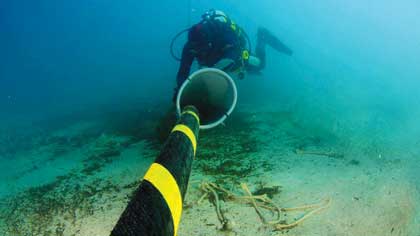Mr. Benoit Lecuyer, CEO, Prysmian India, enlightens us about the energy transition from the non-renewable to renewable, the importance of high-quality cables to meet the growing demand for renewable power generation, and the contribution of Prysmian India in this regard.
Strong measures are needed to limit the carbon emissions responsible for the greenhouse effect and climate change. Transitioning from fossil fuels to clean energies such as wind, solar and nuclear is necessary to limit the temperature increase to 1.5 degrees and achieve the ‘net zero goal’.
The total power generation capacity for India is 380 GW, of which 54 percent is a fossil and 25 percent is renewable, with 40 GW wind. The stated goal for renewable energy is to reach 175 GW by 2022, including 60 GW from onshore and 5 GW offshore, then 450 GW by 2030, including 140 GW from wind power.
A growing number of wind projects are already developed in the states of Tamil Nadu for 7800 MW, Maharashtra for 4800 MW, Gujarat for 4700 MW, Rajasthan for 4500 MW, Karnataka for 3300 MW, and Andhra Pradesh for 2100 MW. International companies such as Vestas, Siemens Gamesa, GE, Envision are engaged in these projects, along with successful Indian companies such as Inox Wind, Powerica, ReGen Powertech, Suzlon, to name only the main ones.
Watch: Wire & Cable Industry Year Review
The energy generated by renewable energies is often produced far from consumers. It is a colossal challenge to transport the Gigawatts produced, whether wind or solar, to the centres of consumption. In this regard, a more powerful, the smarter electricity grid is strategic for a larger, more efficient energy distribution, significantly contributing to decarbonisation.
Thus, energy transmission and distribution companies require more high-tech cables, to meet the growing demand for offshore wind power. To meet these challenges, Prysmian has developed a new generation of cables that allow for a greater power transmission capacity of up to 2 GW via a single cable, and within three years will be increased to 3 GW, over greater lengths, this combined at a higher voltage 525 kV, and soon 600 kV.
Regarding the submarine cables frequently used on offshore wind farms and country interconnections, they can now be deployed at a greater ocean depth, up to 3000 meters, with a laying time reduced by two.
R&D efforts make it possible to substitute heavy and polluting components (lead, halogen) with light and clean solutions such as aramid, a new high-tech polymer. Also, the new HPTE (High-Performance Thermoplastic Elastomer Polypropylene) polymer developed by Prysmian guarantees a reduction of CO2 by 1 tonne per km and allows the transport of more energy.
The use of these technologies also allows for a faster return on investment, of around two years, which makes it possible for this new technology to be deployed by an increasing number of companies.
Another important aspect is the use of IoT and digital solutions that allow real-time monitoring of networks, cables, anticipate maintenance activities, and reduce operating accidents. The result is longer component life, less pollution, which effectively contributes to decarbonisation efforts. Prycam by Prysmian solutions technology fit these objectives, modernise and extend the life of their networks.
Prysmian also promotes decarbonisation efforts with its suppliers by reducing logistics costs, optimising distances with precise monitoring indicators. A constant follow-up on the reduction of greenhouse gases emitted by our factories, our logistics centres, our offices, to enable a 40 percent reduction in emissions by 2030 and achieve the ‘net zero goal’ by 2035.
Also Read: Prysmian Leverages its Aerospace Cables Presence in India
All these Prysmian initiatives committed to the Science Based Target initiatives (SBTi) — a collaboration between the CDP, the Global Compact, the World Resource Institute, WWF, and rewarded via the United Nation Global Compact, a principle-based framework for companies promoting sustainable and socially responsible policies.








